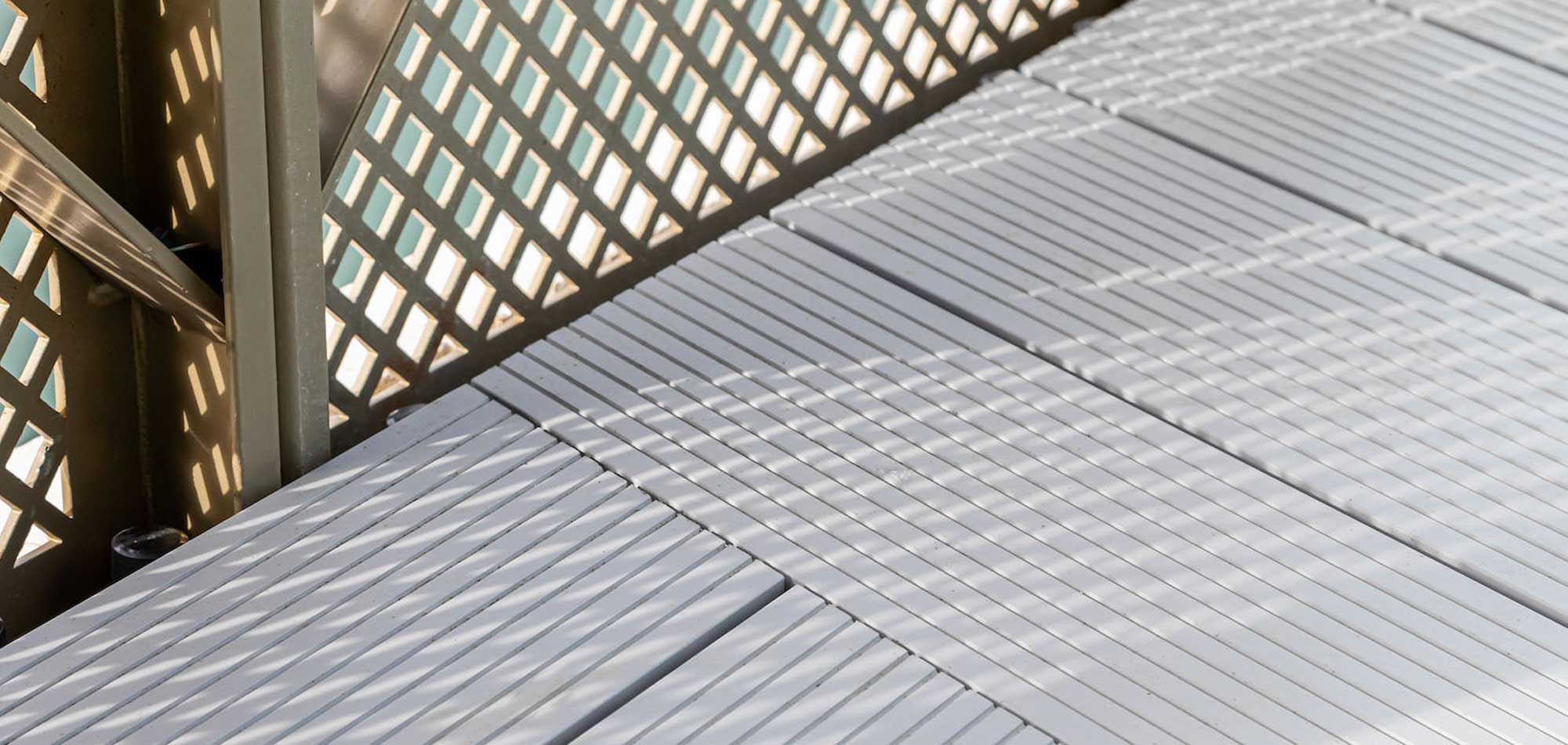With non-combustibility being a requirement on many large developments, aluminium decking is needing to be specified more than ever. What is there to know? It’s aluminium, it is non-combustible, you can get it in a variety of colours and styles! That’s all great. However, do you really feel comfortable that you know how it performs? Or, maybe, are you adding it to your project because you must and don’t feel you know it well enough to want to install it?
We want to help you become familiar with it as a product so you feel comfortable knowing exactly what it is and how it will react. The way we can do this is by honestly answering the questions that you want to know the answer to. A question we get quite a lot from people looking to use aluminium decking on their project – “yeah, that all sounds great, but does it get hot?”
The last thing you want is for your building to be lined with balconies that no one can use during summer because they are hotter than Elon’s latest Crypto tip! But before we go any further let’s spoil the end a little bit, it won’t get like that, and we are here to explain why.
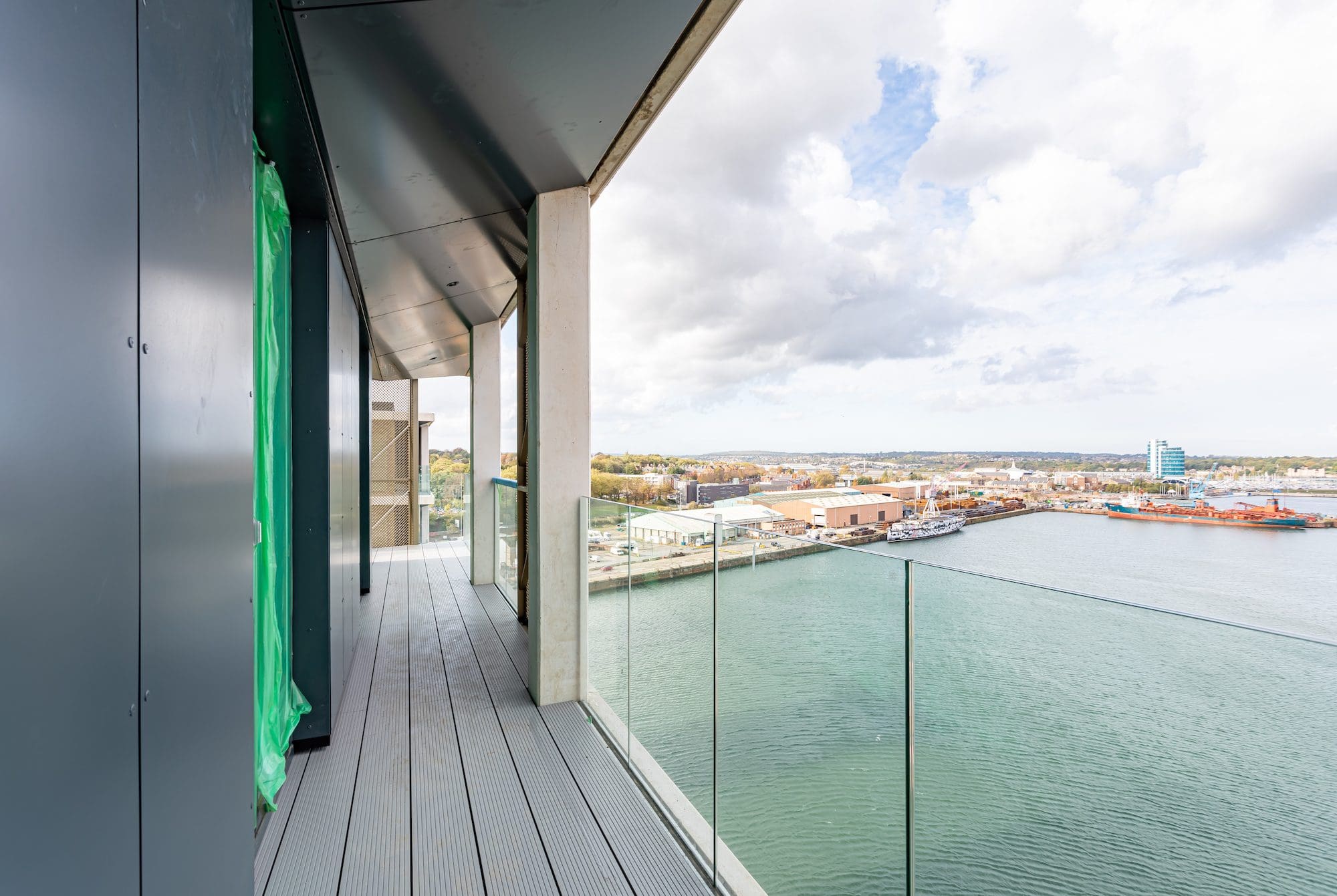
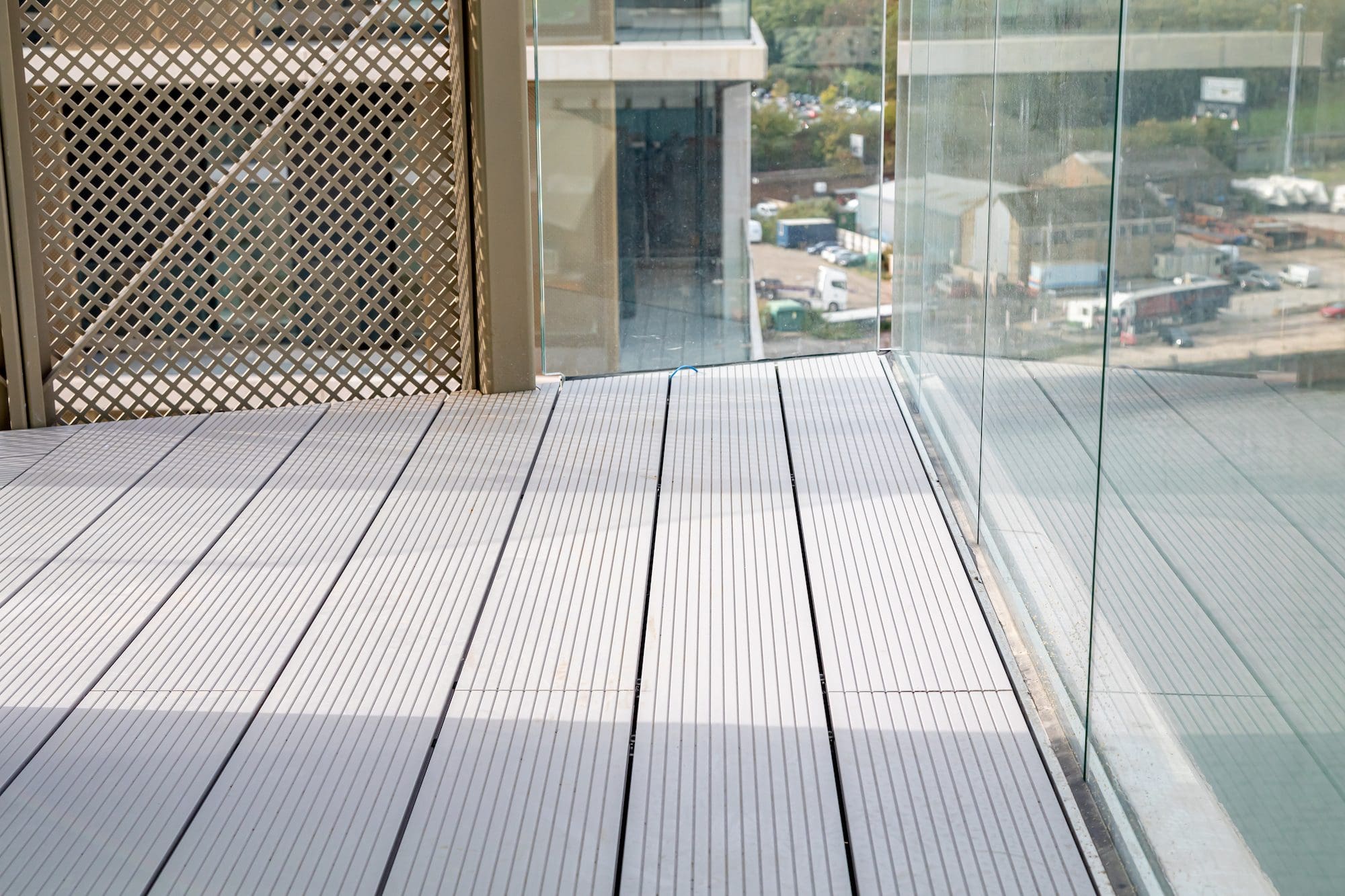
A bit of a caveat before we start, what we do is speak from experience and use independent scientific data to back what we are saying. Please bear in mind that the boards themselves will react slightly differently in every situation and you must take that into account when you go through this article. For example, if you install aluminium decking in both an arctic tundra and a tropical paradise, you will experience different overall temperatures and the maximum temperature the boards will achieve will naturally be different. But you’ve already figured that out, clever clogs!
We may be covering some points that seem very fundamental, but that’s just because we want you to be able to consider everything that might affect how heat reacts with aluminium decking, no matter how simple.
So, what can we look at to see how aluminium decking reacts to direct sunlight?
We would look at the properties of the material such as specific heat capacity and its thermal conductivity as these contribute directly to its reaction to heat energy. Then, the profile, and the colour will also make an impact on how the board would react.
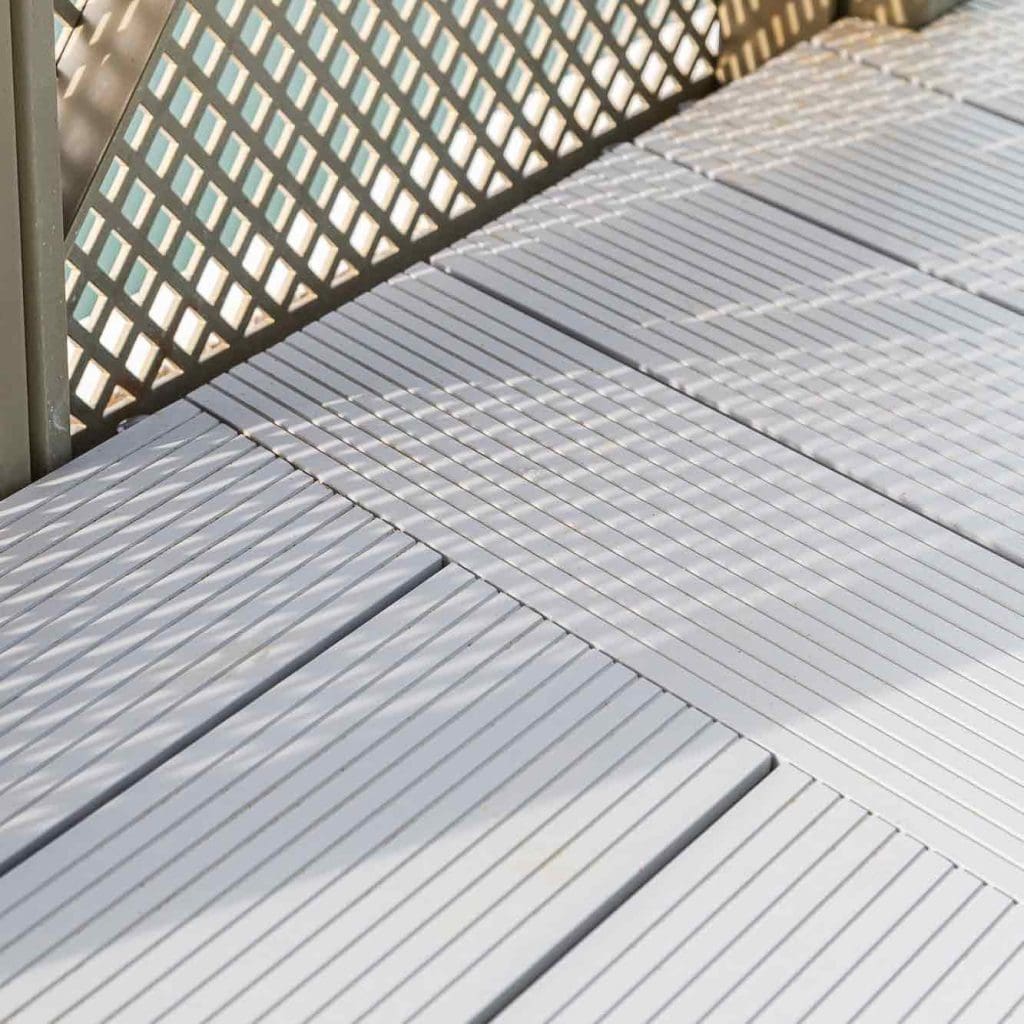
How does specific heat capacity work?
The Specific Heat Capacity of a material is the amount of energy it takes to raise the temperature of the material by 1 degree Kelvin. This is also applicable in reverse, so if it takes 500 joules of energy to raise the temperature by 1oC, then it will take the same amount of energy to cool the material by 1oC.
Why would this be useful? Well, a material with a higher specific heat capacity will, in most cases, take longer to heat up. So, exposure to direct sunlight will not immediately become hot. But it will also take longer to cool down. This means that a material with a large Specific Heat Capacity would likely take more time to increase its temperature but would also hold the heat for longer and, if heat energy is continuously applied, could therefore get to a higher accumulative temperature.
A material with a lower specific heat capacity can, with relative ease, lose heat to the environment as it needs less energy to dissipate the heat to its surroundings.
What is thermal conductivity?
Thermal conductivity is the ability of a material to conduct heat energy and spread it throughout its mass. A higher value of thermal conductivity means that heat energy is quickly transferred throughout the material.
Materials with lower thermal conductivities are often used for insulation as they take in less heat energy from the surrounding area allowing the space to retain its temperature. Materials with a higher thermal conductivity are used as heat sinks in technology as they often have the properties to provide an easy path for the heat to dissipate, lowering the overall temperature of the material they are attached to.
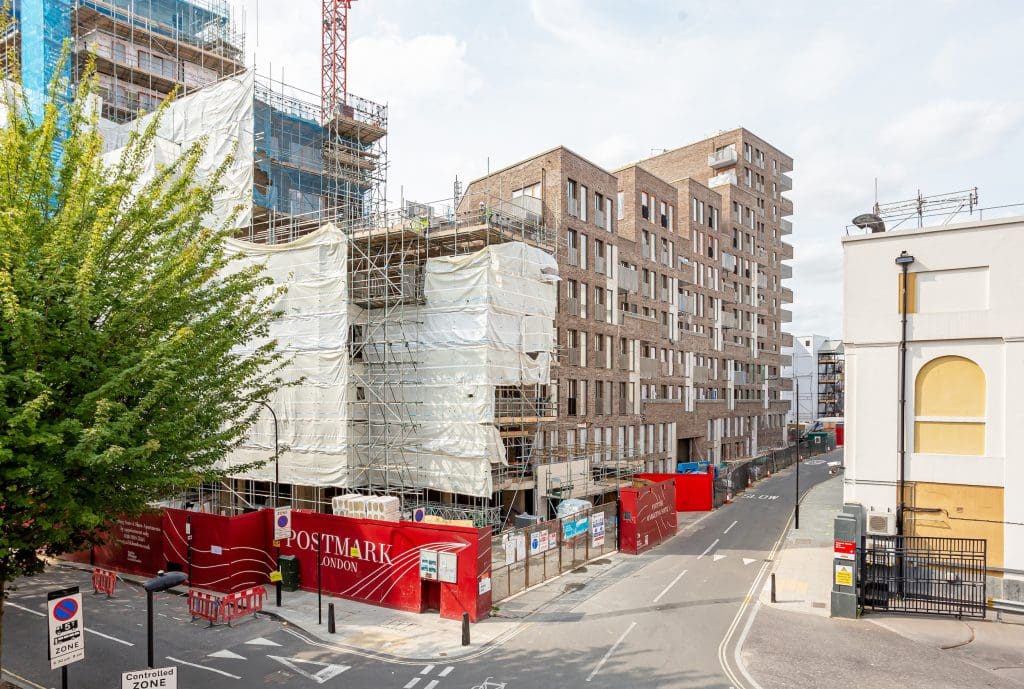
How can we apply this data?
It is always good to see the values stacked up against each other and in a relatable way. To make it easy, let’s take the properties of Aluminium 6063-T6. This specific iteration of aluminium is one often used in decking boards. And for its comparison, let’s take Oak, which is a popular type of wood for decking in the UK.
Aluminium 6063-T6:
Specific heat Capacity – 0.9 J/g K
Thermal Conductivity – 200 W/mK
Oak:
Specific heat Capacity – 2000 J/g K
Thermal COnductivity – 0.17 W/mK
This table shows that, in comparison, it takes a lot less energy to heat Aluminium than it does Oak, but it takes a lot more energy to cool Oak as opposed to Aluminium. As aluminium has high thermal conductivity, the heat is spread around the material more easily and across all areas allowing more opportunities to cool the material. Oak has a much lower thermal conductivity meaning that the heat energy will be concentrated longer in the same spot.
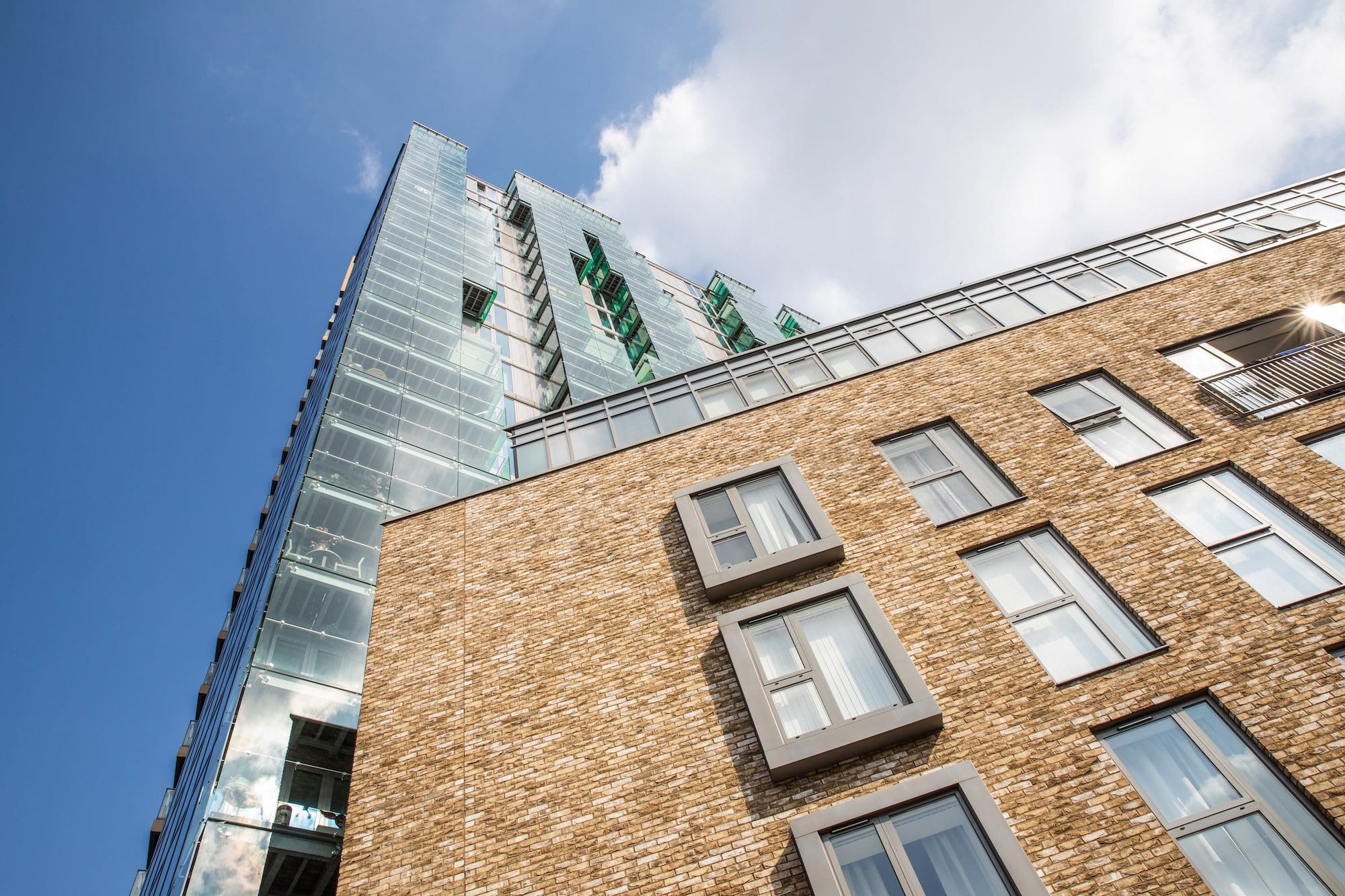

How does the profile of an aluminium decking board reduce the temperature?
This is extremely interesting… or at least for us deck nerds, it is. Essentially, the way aluminium decking boards are made is through an extruder and, to keep material costs low with maximum strength, the profile of the board is very thin and there are multiple fin style supports that come as standard. Their primary function is for stability and to stop the boards from warping in any way. It’s also worth noting that there are also small grooves that are used for grip and run the length of the board creating this fin structure as well.
What these fins do, however, is naturally mimic the design of a heat sink. This feature is designed into the profile of the board to cleverly ease the dissipation of the heat energy to the surrounding environment
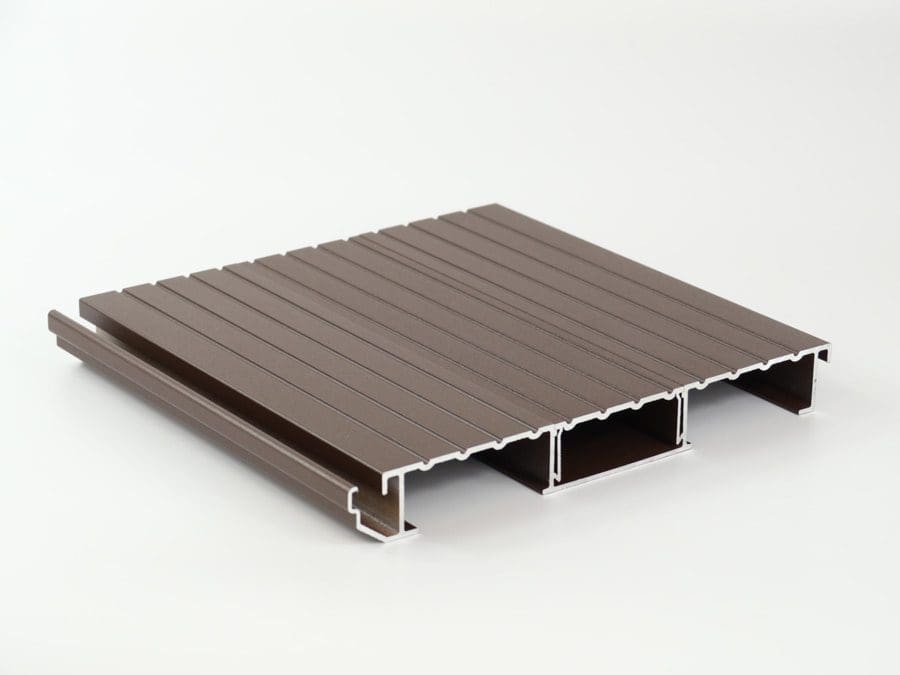
Heat sinks are used in tech such as computers to cool down the hardware. They have high thermal conductivity and are made up of lots of fins. What this means is they can draw heat away from critical components and have a large surface area that channels air movement. The air takes the heat away from the heat sink and, in turn, lowers the overall temperature of the hardware.
Decks and their fins do the same thing, they channel the air over the surface of the board and with their large surface area allow the heat to be drawn away from the material itself allowing it to cool relatively quickly.
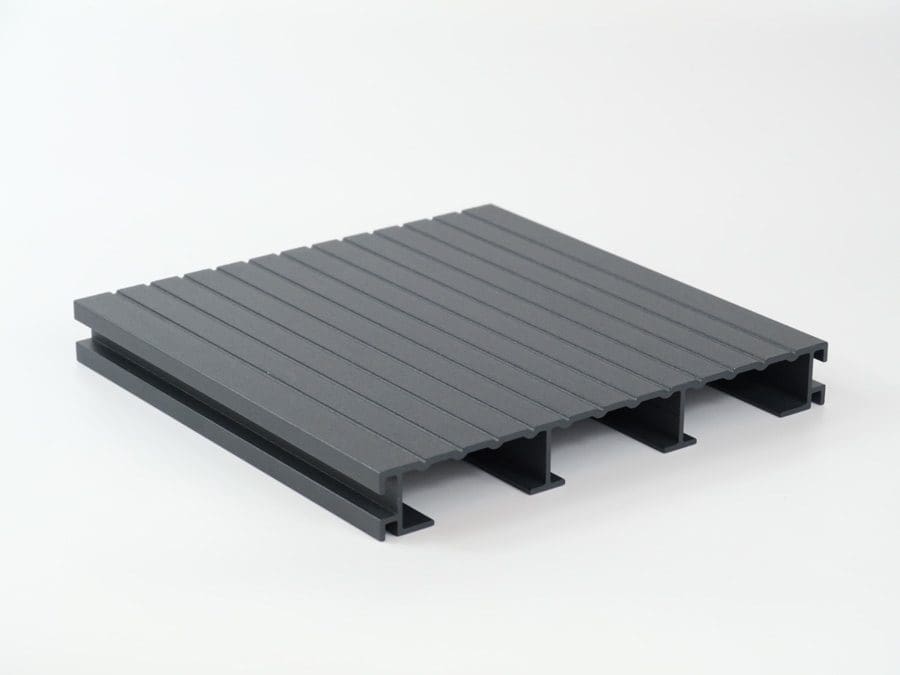
Is there anything else that will affect the temperature?
Colour. It’s something we all know about but it’s worth vocalising, the lighter the deck board the more light it will reflect and the darker the board the more it will absorb. The boards that absorb more light will get hotter than those that reflect it.
The other simple factor is deck placement or deck exposure. If your deck is lucky enough to have glorious uninterrupted views in the northern hemisphere facing south with a simple glass balustrade, then it shouldn’t come as much of a surprise that it’s going to get hotter than it would if it was facing north, surrounded by buildings casting it in shadow with a heavy-duty balustrade to protect it.
And in conclusion?
Well, the science speaks for itself. Aluminium deck boards share much of the same properties heat sinks do. They can absorb and dispel heat very quickly and they share the heat across their entire mass with ease allowing it to dissipate from all sides. Not only that, but they also have a fin-like structure that funnels the air across them giving the air a good go at absorbing the heat.
Aluminium decking will heat up, there’s no doubt about that, it will heat up quicker than its wooden cousin, but it will also cool down a lot quicker and therefore won’t get to as high a temperature.
